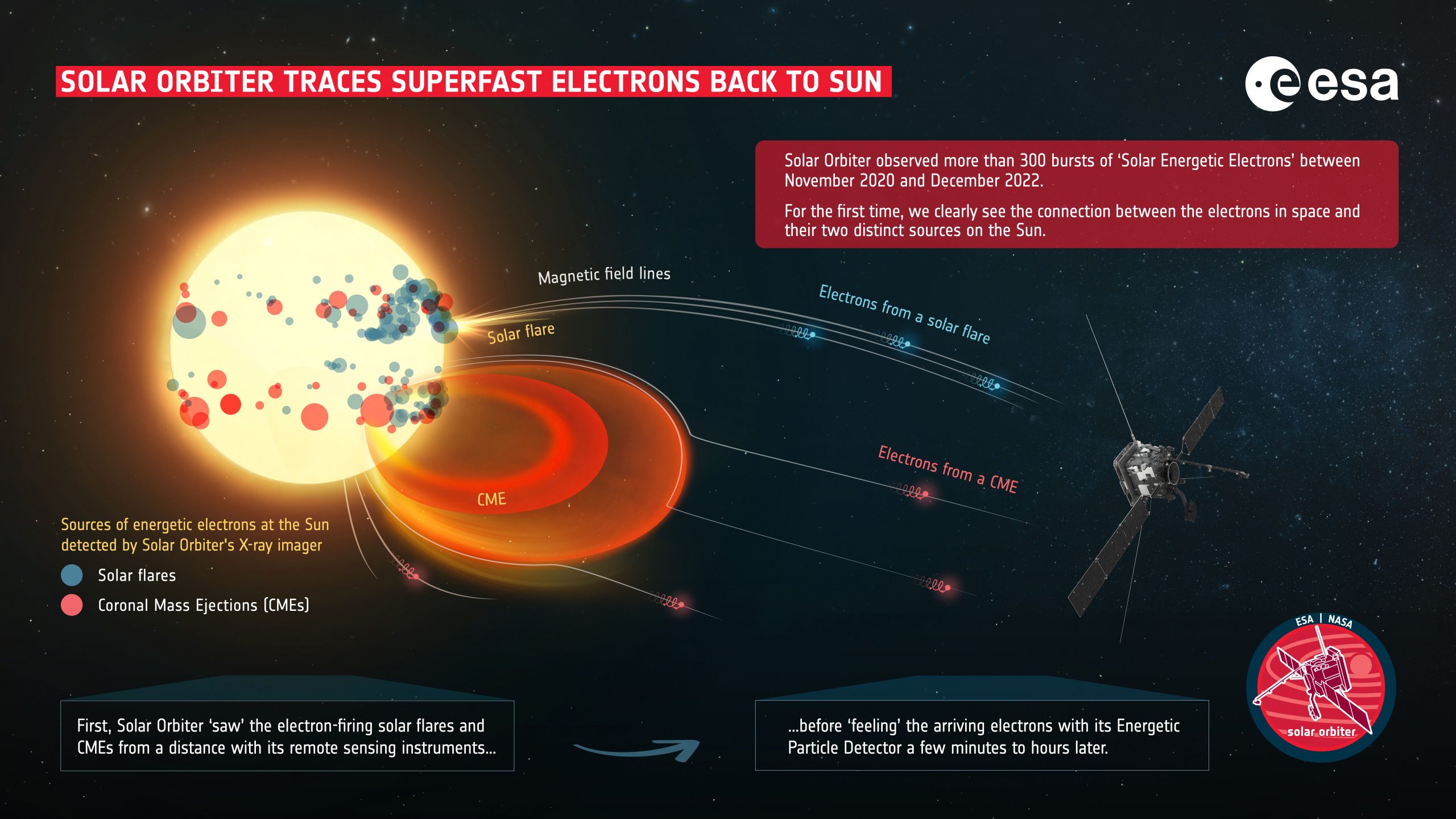Why in the News?
The NASA-ESA Solar Orbiter Mission has recently traced the origin of Solar Energetic Electrons (SEE), advancing knowledge of solar activity and space weather.

About NASA–ESA Solar Orbiter Mission:
- Launch & Cost: Launched in Feb 2020 on an Atlas V from Cape Canaveral; joint ESA–NASA mission worth $1.5 billion.
- Duration: Primary mission till 2026, extendable to 2030.
- Orbit: Highly eccentric, approaching 0.28 AU (inside Mercury’s orbit); gradually tilts to image Sun’s poles.
- Payload: 10 instruments — both in-situ (solar wind, magnetic fields, particles) and remote sensing (imaging, spectroscopy).
- Firsts & Objectives: First to image solar poles; aims to study solar wind origin, solar cycle dynamics, causes of flares/CMEs, and their impact on heliosphere & space weather.
What are Solar Energetic Electrons (SEE)?
- What are they: Streams of high-energy electrons released into space, travelling across the heliosphere.
- Sources: Emerge from solar flares (sudden surface bursts) and coronal mass ejections (CMEs) (plasma + magnetic eruptions).
- Patterns: Release not always immediate; often delayed by hours due to turbulence/scattering in interplanetary medium.
- Solar Orbiter Observations: Detected 300+ bursts (2020–22), clearly linking SEE to solar flares/CMEs for the first time.
Significance of the recent findings:
- Science: Clarifies Sun’s particle acceleration mechanisms.
- Space Weather: CMEs are the main drivers of severe events — affecting satellites, GPS, communication, power grids, and astronaut safety.
- Practical Utility: Improves solar storm forecasting and early-warning systems for infrastructure & human spaceflight.
- Long Term Implications: Expected to revolutionise solar physics and our predictive capacity of Sun–Earth interactions.
| [UPSC 2022] If a major solar storm (solar flare) reaches the Earth, which of the following are the possible effects on the Earth?
1. GPS and navigation systems could fail. 2. Tsunamis could occur at equatorial regions. 3. Power grids could be damaged. 4. Intense auroras could occur over much of the Earth. 5. Forest fires could take place over much of the planet. 6. Orbits of the satellites could be disturbed. 7. Shortwave radio communication of the aircraft flying over polar regions could be interrupted. Select the correct answer using the code given below: (a) 1, 2, 4 and 5 only (b) 2, 3, 5, 6 and 7 only (c) 1, 3, 4, 6 and 7* only (d) 1, 2, 3, 4, 5, 6 and 7 |
Get an IAS/IPS ranker as your 1: 1 personal mentor for UPSC 2024

